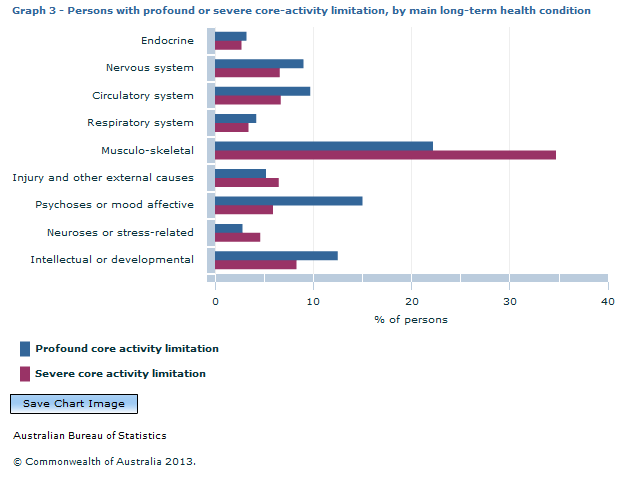4430.0 - Disability, Ageing and Carers, Australia: Summary of Findings, 2012  Quality Declaration
Quality Declaration
ARCHIVED ISSUE Released at 11:30 AM (CANBERRA TIME) 13/11/2013
Page tools:
 Print Page Print Page
 Print All Print All
| ||||
Understanding the health of people with disability can help to inform policy in both public health and disability services. In this survey, respondents with more than one long-term condition are asked to report the condition causing them the most problems when completing everyday activities - described here as their 'main condition'. In 2012, 81% of people with disability (3.4 million people) reported a physical condition as their main condition and 19% reported mental or behavioural disorders. Diseases of the musculo-skeletal system and connective tissue were the main physical conditions reported, which were reported by one third (33%) of people with disability. These conditions included back problems (15%) and arthritis and related disorders (14%). (Table 12) Almost one in five people with disability (19% or 813,900 people) reported a mental or behavioural disorder as the long-term health condition causing them the most problems. This included 5.6% with intellectual and developmental disorders, 3.8% with depression and mood affective disorders and 2.1% with dementia and Alzheimer's disease. (Table 12) The type of long-term health condition causing someone the most problems varied with age. Considering the main conditions reported across three broad age groups, for people with disability:
 Source(s): ABS Survey of Disability, Ageing and Carers, Australia: Summary of Findings-2012
|
||||
